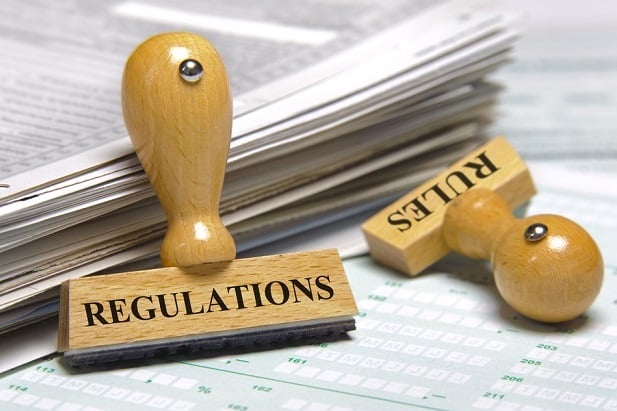Recordkeepers to defined contribution plans are askingregulators for as immediate-as-possible guidance on provisions ofthe SECURE Act that became effective with the New Year.
|"Our members are being deluged with questions from plansponsors," said Tim Rouse, executive director of the SPARKInstitute, which advocates for recordkeepers and other providers toretirement plans.
|Many of the core provisions in the SECURE Act, such as newregulations on Open Multiple Employer Plans, will need substantialregulatory input from the Labor and Treasury Departments. But OpenMEPs won't be available to the market until 2021.
|However, other provisions were designed by Congress to beavailable to retirement savers now.
|Integrating those changes in the law into recordkeepingplatforms will require substantial investments in technology, callcenter training, and outreach to plan sponsors.
|A recent letter from SPARK to the IRS and Treasury Departmentoutlines the provisions of SECURE that cannot be implemented byrecordkeepers without guidance.
|"The immediate pressing issue is with withholding," said MikeHadley, a partner with Davis & Harman and a member of SPARK'sadvocacy team.
|Under tax law, recordkeepers withhold 20 percent of 401(k)distributions. SECURE raised the Required Minimum Distribution agefrom age 70 ½ to 72. With the RMD's increased age now in effect,and because recordkeepers have not had the time, or necessaryguidance, to change their systems, some distributions this yearwill be treated as an RMD even though they are not.
|An RMD is not subject to the 20 percent withholding requirement,nor do recordkeepers and sponsors have to provide the legal noticeof a distribution if it is an RMD.
|The question recordkeepers are asking is should they withholdthe 20 percent and give legal notice for RMDs made this year underthe old rules—and if they do, could that disqualify a plan from itstax exemptions.
|Hadley says Treasury could—and in previous changes to the taxcode—has offered "good faith" relief for retirement plan providersif they execute on reasonable interpretations of the law absentformal guidance.
|"I'm not seriously concerned Treasury will play 'gotcha' withthis, but getting relief will allow SPARK members to move forward,"said Hadley.
|New birth and adoption distribution raises trickyquestions
With some of the immediately effective provisions, recordkeeperswill be better able to move forward if they can assume regulatorsoffer good faith relief.
|Changes to the RMD age are relatively straightforward, saidHadley, and should require only common sense guidance.
|But a provision that allows new parents to take a distributionof up to $5,000, penalty free, is not straightforward, and will bedifficult, if not impossible, for recordkeepers to implementwithout guidance from Treasury.
|That provision, which was lifted from the Family Savings Act, aRepublican bill first introduced in the 114th Congress, raisesdifficult questions for recordkeepers, and will require extensiveguidance before young families will be able to benefit from thefeature.
|First, recordkeepers need confirmation that the birth oradoption withdrawal is optional for sponsors to offer. "Everyone isassuming it's optional," said Hadley, but no one can be certain itis until regulators weigh in.
|Recordkeepers will also need guidance on how they shoulddetermine a birth distribution from a standard distribution, for anRMD or for a terminated employee.
|"No SPARK member has systems in place to capture and verifywhether a distribution would meet the definition of a qualifiedbirth or adoption distribution," wrote Rouse in his letter to theIRS.
|"This raises a lot of questions," said Hadley. As written, theprovision allows the distribution to be paid back without any timelimit. SPARK is hoping for guidance that will allow recordkeepersto treat the birth distribution as they would a rollover.
|Deliberate speed, thoughtful regulation
Rouse and Hadley said they have not heard back from the TreasuryDepartment, apart from an acknowledgement that their letter wasreceived.
|"I don't have a sense of when guidance is coming," said Hadley."Getting good, substantive answers to questions takes time. We wantregulators to work with deliberate speed, but be thoughtful."
|In the short-term, recordkeepers would welcome good faith reliefon the withholding issues raised by SECURE.
|Hadley expects initial guidance could come in a Q & A fromthe IRS, but regulators are limited in the ground rules they set inthat less-formal format, which does not include public commentperiod and other requirements of more formal rulemaking.
|"It could take many months before we get meaningful guidance,and they could do it in batches," added Hadley.
Complete your profile to continue reading and get FREE access to BenefitsPRO, part of your ALM digital membership.
Your access to unlimited BenefitsPRO content isn’t changing.
Once you are an ALM digital member, you’ll receive:
- Critical BenefitsPRO information including cutting edge post-reform success strategies, access to educational webcasts and videos, resources from industry leaders, and informative Newsletters.
- Exclusive discounts on ALM, BenefitsPRO magazine and BenefitsPRO.com events
- Access to other award-winning ALM websites including ThinkAdvisor.com and Law.com
Already have an account? Sign In








